Jingo-ji Temple, Kyoto
Founded in the 8th century, this Shingon temple is located at Takao, northwest of Kyoto. Kukai, founder of the Shingon sect, came here in 809 and stayed for 14 years.
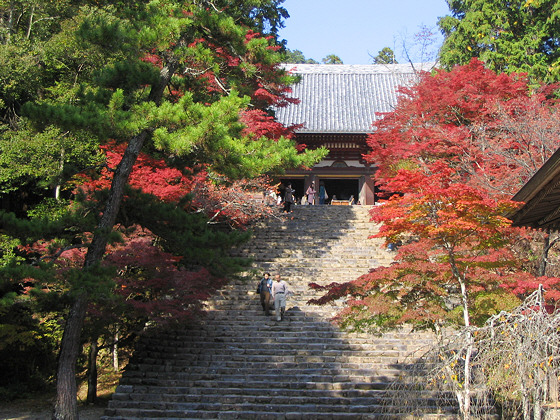
Steps leading to the main hall of Jingoji Temple.
After the temple burnt down the monk Mongaku persuaded Retired Emperor
Go-Shirakawa and shogun Minamoto Yoritomo to rebuild it, the
work being completed in 1184. However most of the temple buildings
were destroyed again in the Onin War. Only the Daishido survived
the war and several of the current buildings date from 1623.
The temple is famous for its Autumn maple foliage and has a fine
collection of art treasures (only displayed from May 1-5). Below the
main temple complex is a Jizo Hall where visitors may throw clay cups
called kawarake off the adjacent cliff for good luck. In the
valley below, the Kiyotaki Michi path leads
downriver through beautiful countryside to Kiyotaki village.
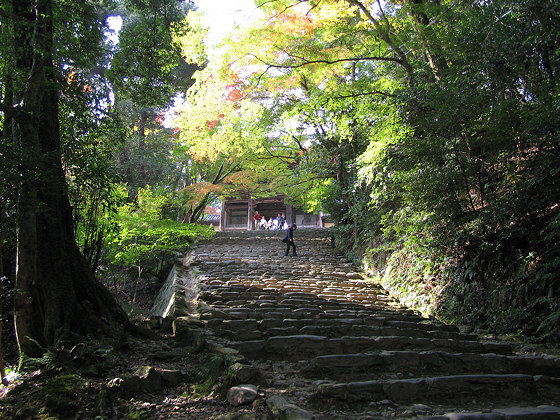
Steps leading up to the gate of Jingoji Temple.
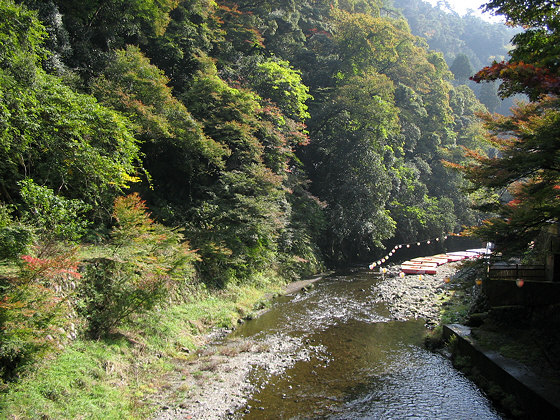
Kiyotakigawa River beneath Jingo-ji Temple.
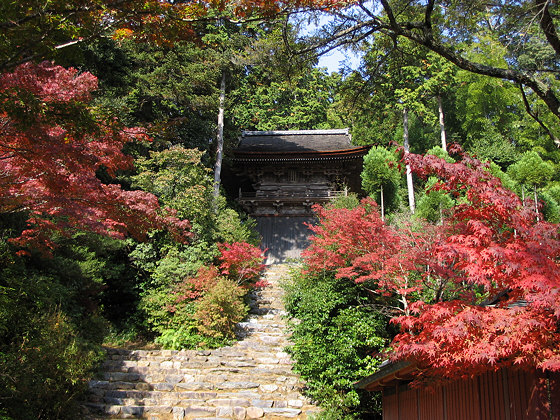
Belfry of Jingoji Temple.
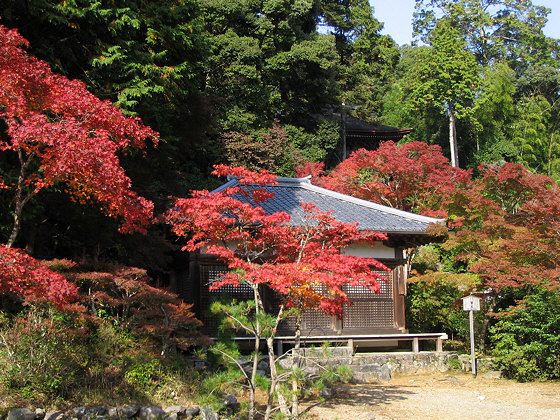
Small hall and Autumn leaves at Jingoji Temple.
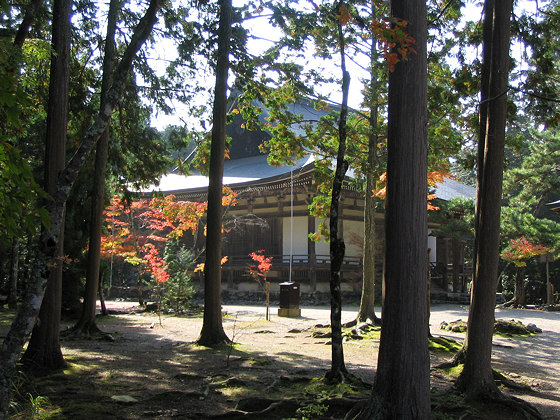
Jingoji Temple's Godaido (Hall of the Five Great Deities).
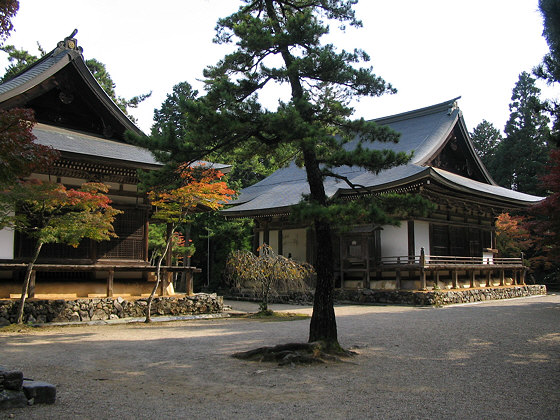
Jingoji Temple's Bishamondo and Godaido.
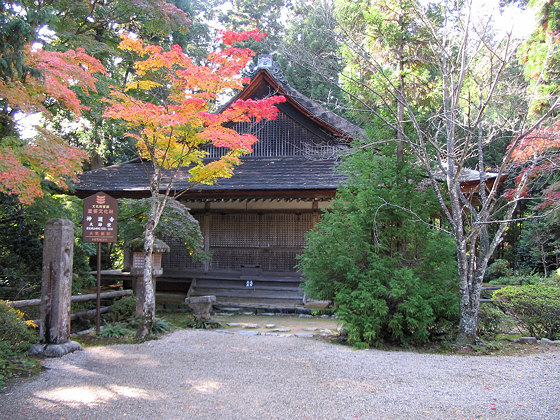
Daishido (Kobo Daishi Hall) of Jingoji Temple.
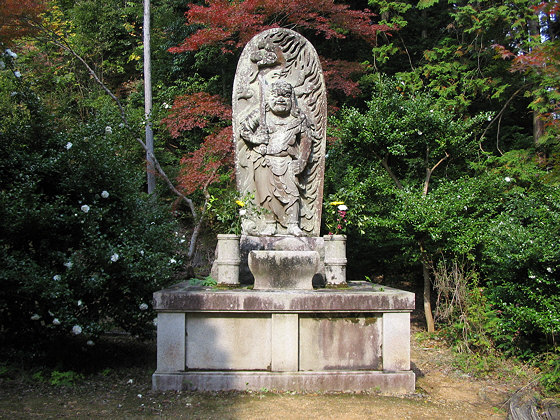
Stone sculpture of Fudo Myo-o at Jingoji Temple.
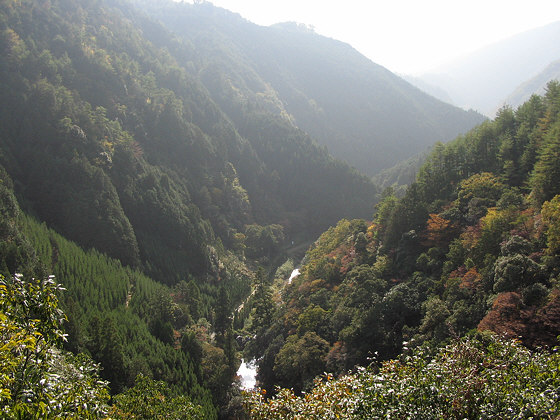
Valley beneath Jingoji Temple.
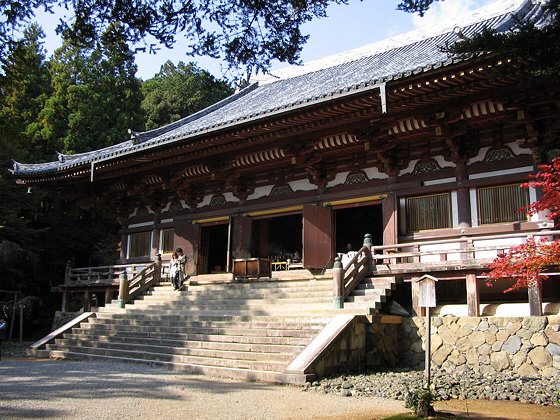
Main hall of Jingoji Temple.
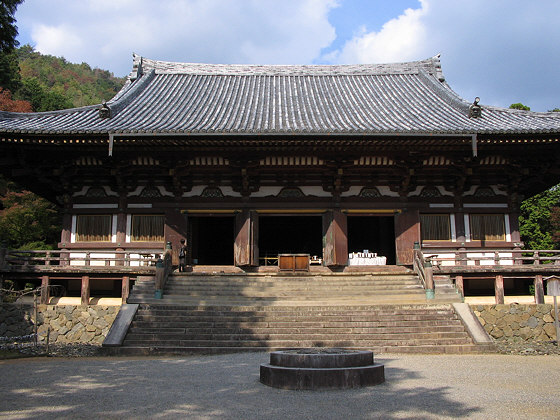
Main hall of Jingoji Temple.
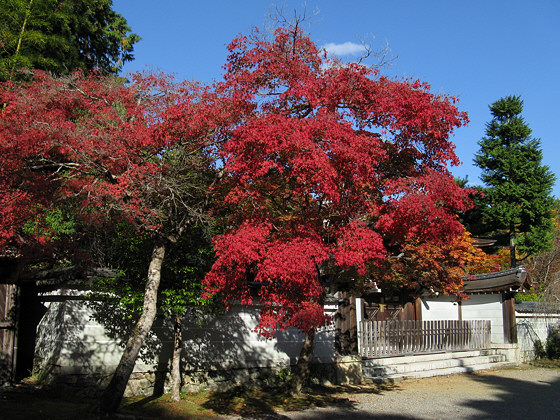
Jingoji Temple momiji.


